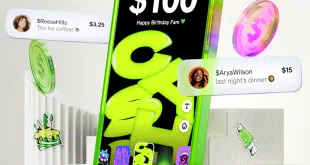A proposed method by which retailers could take checks they accept at the point of sale and convert them in a back office into electronic transactions on the automated clearing house could hinder an encouraging trend among consumers away from writing checks and toward electronic transaction channels, such as credit and debit cards, argues one prominent ACH banker. “I'm a little concerned [back-office conversion] continues the life of the check,” says Alan Koenigsberg, vice president for global ACH at J.P. Morgan Chase & Co., New York. “Where's the incentive to get consumers to a better channel?” With back-office ACH conversion, merchants would be able to collect all consumer checks taken throughout a store and convert them in batches in central locations. As the concept is currently conceived by NACHA, the Herndon, Va.-based rules-setting body for the ACH that is developing a business case for the new payment type (Digital Transactions News, April 20), back-office conversion would allow merchants to avoid or reduce certain costs they face with NACHA's existing standard entry code for point-of-sale conversion, called point-of-purchase conversion or POP. Most merchants have not adopted POP because it imposes a number of operational costs on them, including the need to get consumer authorization for each conversion, to equip each point of sale with scanner gear, and to train cashiers. Under back-office conversion, merchants would use a so-called notification-equals-authorization rationale similar to that used with accounts-receivable conversion (ARC), a method by which billers convert consumer checks collected at lockboxes. Merchants would also hold on to checks for a period of time rather than hand them back immediately to consumers, as is the case with POP. But by moving the conversion action from the checkout counter to an unseen room, Koenigsberg argues, back-office conversion could hamper the trend among consumers toward writing fewer checks. At least with POP, he says, it is obvious to the consumer that checks are being translated into electronic funds transfers, a point that gets underlined when the cashier hands the check back. Some consumers, POP advocates argue, get the idea that writing checks is pointless and begin switching to more efficient electronic payments. But back-office conversion, Koenigsberg says, could render consumers numb to electronic conversion. “Consumers don't feel anything,” he says. He also fears check fraud could rise with the loss of conversion in a face-to-face manner. When completed, the business case for back-office conversion will go before NACHA's rules and operations committee and then on to the board. If the board greenlights it, the method would go into pilot. Although NACHA says no timetable has been set for this process, some observers say they hope to see a pilot in progress by the end of the year. NACHA officials say it could take anywhere from three to nine months to build the business case, a process that only began in February.
Check Also
Despite Lower-Than-Expected Profit And Cash App Softness, Block Remains Bullish
Block Inc. remains bullish that its Cash App financial-services platform will remain a growth driver …





